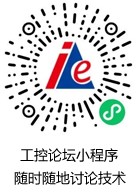安全仪表系统的十个事实之六(中英文对照) 点击:304 | 回复:1
TRUTH # 6
You don't have to choose between
Safety Instrumented System (SIS) separation and Basic Process Control System (BPCS) integration; you can have BOTH
BPCS INTEGRATION allows a plant operator to monitor process conditions and prevent hazards while monitoring the health of the control system. Pressure to reduce costs and to single-source control system hardware should not be justification for combining safety system functionality and basic process regulatory control.
Good engineering standards and practices, government regulations, recommendations by experienced experts, and common sense dictates that these functions be separated.
The industry is leaning toward independent layers of protection to maintain strict physical separation and diversity between process control and safety instrumented functions. Integration is performed at the information, configuration, and HMI levels.
Is your SIS architecture forcing you to choose between separation and integration, or is it able to provide both?
To read Hydrocarbon Engineering Magazine’s September 2006 article titled, “Where to draw the Line – The problem of integrating control and safety effectively,” go to www.triconex.com/truth6.
- 维修电工考高配证作用大么
 [4980]
[4980] - TMATE控制器
 [1904]
[1904] - 论异步电机的星三角启动
 [5051]
[5051] - 送给广大面试者
 [2637]
[2637] - 怎样在WinCC中将一个16位过程...
 [2494]
[2494] - 霍尼韦尔温控表DC1020的操作...
 [2776]
[2776] - (已结束)Moxa以太网周擂台第...
 [3413]
[3413] - 有史以来最全的仪器仪表知识
 [3728]
[3728] - 交流接触器与接近开关的接线
 [2779]
[2779] - 开关电源漏电
 [3567]
[3567]

官方公众号

智造工程师
-

 客服
客服

-

 小程序
小程序

-

 公众号
公众号

















 工控网智造工程师好文精选
工控网智造工程师好文精选
